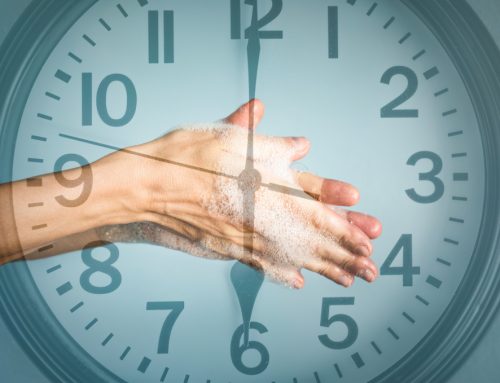
We do so much to help keep ourselves and our families healthy — from eating right to exercising regularly to taking vitamins — but one of the easiest things we can do is to keep our hands clean.
Most germs are out of sight, out of mind. Still, we encounter germs just about everywhere we go and on everything we touch throughout the day. Studies of smartphones have been found to have bacterial counts of more than 17,000. One expert estimates that “very few surfaces are truly clean” and that we come into contact with around 60,000 different microbes every day.
While the vast majority of microbes are harmless, but there are some that can cause a variety of symptoms ranging from unpleasant to severe.
Hand Hygiene Works
We touch a contaminated surface or object and then we touch our faces. This is human nature. But in doing so, we can introduce bacteria and viruses into our system that can cause illness.
Study after study has shown that washing your hands with soap and water is a powerful tool in reducing the number of microbes on the skin. When soap and water aren’t available, hand sanitizers that contain at least 60% alcohol are a great alternative.

When To Keep Hands Clean
There’s never a bad time to wash your hands with soap and water, but the CDC recommends several key moments during the average day when you should wash your hands:
- Before, during and after preparing food
- Before and after eating
- After using the toilet
- After changing a diaper or helping a child clean up after using the toilet
- After blowing your nose, sneezing or coughing into your hands
- After touching garbage
- After handling pet food/treats or cleaning up pet waste
You will also want to wash your hands:
- Before and after taking care of someone who is sick
- Before and after treating a cut or wound
- After coming into contact with high-touch surfaces

Sing “Happy Birthday” Twice
Ideally, you want to wash your hands with soap and running water. Why? The friction of rubbing your hands together and the surfactants in soap help lift dirt and microbes off your skin.
The CDC recommends wetting your hands thoroughly, applying soap, then lathering up for at least 20 seconds — about the time it takes to sing “Happy Birthday” two times in a row — paying close attention to the areas between your fingers and under your fingernails. Then rinse your hands and dry them on a clean towel.

When You’re Not Home
We’re not always near our home sink and towels when we sneeze, cough, or touch a potentially dirty surface. But we can still sanitize our hands.
When there’s no sink or soap to be found, hand sanitizers containing at least 60% alcohol are a great alternative. Most GermX® hand sanitizer’s are formulated-in-the-USA, the original formula has 62% alcohol, and the advanced formula contains 70%.
Simply apply the gel to the palm of one hand (enough to fully wet the surface of both hands) and rub your hands together for about 20 seconds, or until the gel begins to dry. Again, pay special attention to between the fingers and fingernails.
GermX® hand sanitizers are here to help whenever you need to reduce germs on the go. Both our Original and Advanced formulas contain at least the CDC recommended levels of alcohol, and our moisturizers help combat dryness.
Remember, soap and water is always preferable, but you can always count on tough-acting GermX® hand sanitizers to complement your hand hygiene routine. Our alcohol-based hand sanitizers are effective at eliminating 99.99% of many common harmful germs and bacteria in as little as 15 seconds.




